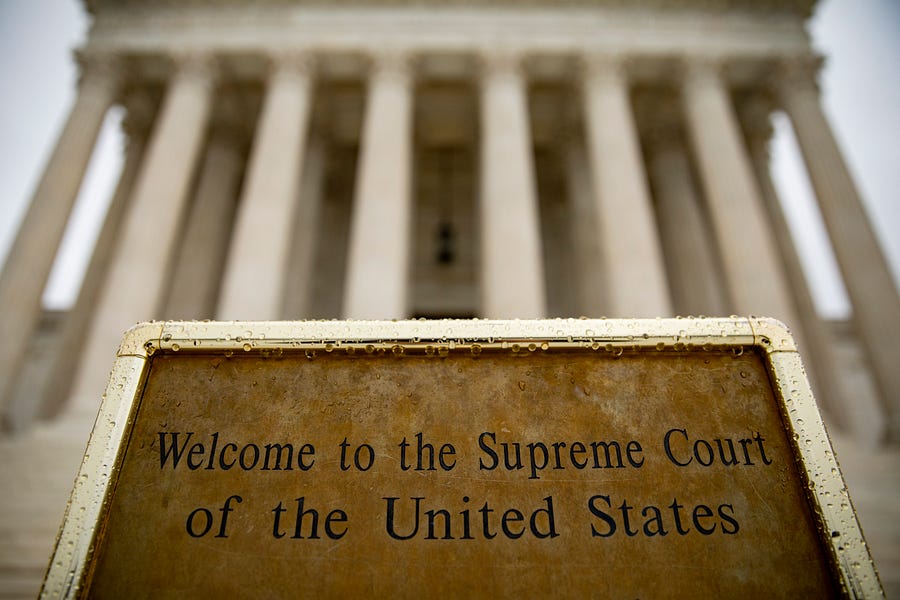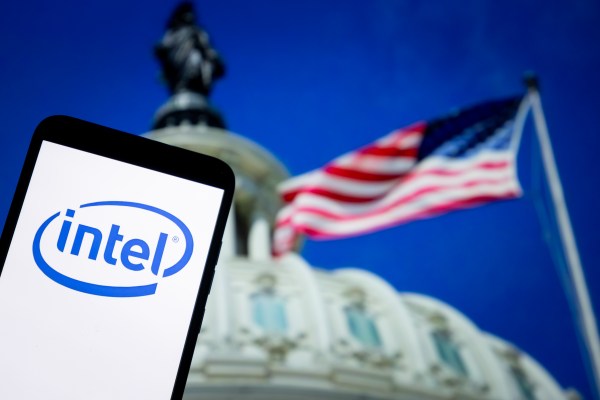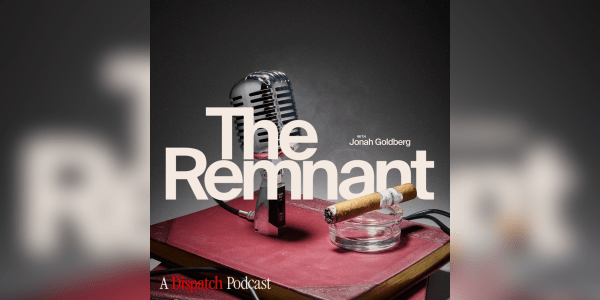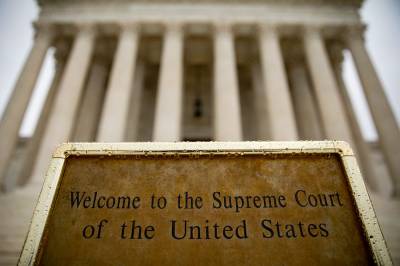Arguments at the Supreme Court start back up on Monday. And unlike the relative calm of the last few terms, the conclusion of the 2019 term is set to be a big one. By the end of June, the court will have weighed in on the disclosure of Trump's financial records, the rescission of DACA, the Louisiana abortion law on doctor’s admitting privileges, whether gender discrimination laws apply to gay and transgender employees, another 2nd Amendment case, and whether to take (and potentially expedite hearing for this term on) the 5th Circuit’s Obamacare case on the individual mandate. Expect a lot of 5-4 outcomes and some blistering dissents.
But all of that could change if Justice Ruth Bader Ginsburg, 86 years old, or Justice Stephen Breyer, 81 years old, were to leave the court unexpectedly. Neither is likely to retire voluntarily as long as a Republican is in the White House, and Ginsburg has proved resilient in the face of numerous health problems. But it’s worth remembering how Justice Antonin Scalia’s unexpected death shook up not only the remainder of the 2016 SCOTUS term but also the ensuing election.
A new justice would not be confirmed in time to vote in these cases, but a vacancy would undoubtedly affect the outcome of some cases. After Justice Scalia died, for example, the court ended up with four cases evenly split 4-4, a scenario that automatically affirms the lower court’s opinion. Short of that, the court could grant rehearing to wait for a ninth member of the court, decide cases on more narrow jurisdictional grounds because they don’t have the votes one way or the other, or send a case back to a lower court for further findings and simply wait for it to wind its way back up at a later date.
And even without an immediate vacancy, the salience and political sensitivity of these cases will no doubt capture the attention of voters from both sides, once again highlighting the Supreme Court as a major voting issue heading into 2020.
So what happens politically if there’s a vacancy on the court in an election year?
After the 2016 election, a Washington Post poll found that the Supreme Court had been the most important fact for 1 in 4 Trump voters. But the same was not true on the left. Exit polling from CNN showed a 15-point gap between Republicans and Democrats on how important the Supreme Court was to their decision. Similar sentiments prevailed in 2018 after the fraught Kavanaugh confirmation battle: 47 percent of North Dakota voters, for example, said that Democratic Sen. Heidi Heitkamp’s vote against Kavanaugh was “a major factor in how they voted.”
But it is not at all clear that the partisan gap that existed in 2016 and 2018 wouldn’t reverse itself in the run up to 2020 if Trump were to have the opportunity to fill another seat. Losing is, we know, a bigger motivator than winning. And losing the Ginsburg seat in particular would be a devastating loss for liberal jurisprudence, both because of who she is and that it would further reduce any chance for the next Democratic president to change the overall makeup of the court. After a bruising primary, the Ginsburg seat could unite Democratic voters around a nominee who centered his or her campaign around the Supreme Court.
And now that Republican presidents have nominated and confirmed a majority on the court, will Republicans stay as motivated to fill yet another seat? Will they, as they say, just get tired of winning?
Democrats were outraged in 2016 by Mitch McConnell’s refusal to bring the Merrick Garland nomination to the floor but that crucial fifth vote on the court still wasn’t enough to overcome the 15-point lag among Democratic voters. Could the possibility of an even further 6-3 conservative-liberal split really do more to energize their base this time?
It might depend on who Trump nominates. So, let’s consider the possibilities.
Who is on the list to fill the next seat?
In talking to more than a dozen current and former lawyers in the administration, there’s no question that Amy Coney Barrett, a popular choice among Republicans last time, is the president’s most likely pick.*
As one former White House counsel lawyer put it, “Judge Barrett has been a star on the 7th Circuit and has the sort of magnetic personality and inspiring personal story that would make her a cultural icon for conservatives the way Justice Ginsburg currently is for liberals.”
Perhaps channeling what motivates his former boss, this attorney added, “plus she’s a Trump nominee already and so the president would be entitled to complete credit for appointing her to the Supreme Court.”
Another said, “It’s Amy and I don't think there is a serious debate unless the vetting process uncovers something significant that wasn't uncovered the first time.”
A veteran attorney from the Kavanaugh and Gorsuch confirmations added that Barrett, “has already proven that she can make it through the [Senate Judiciary Committee] gauntlet (despite the Dems best efforts), is a favorite of the base who will rally to support her, and can take up [Justice Ginsburg’s] feminist mantle because she is the epitome of ‘having it all’.”
Who is she?
Barrett currently sits on the 7th Circuit in Indiana. She clerked for Justice Scalia and was a law professor at Notre Dame until her confirmation to the appellate court. She is a Catholic and a mother of seven; during her previous nomination hearing Dianne Feinstein sparked headlines when she referenced Barrett’s Catholicism saying, “the dogma lives loudly within you.” So much so that in interviewing people for this piece, one of the attorneys I spoke with proudly offered me tea in this mug and another had a matching T-shirt, which again tells you just how much of a fan base Judge Barrett already has among the conservative legal eagles.

As Politico described her, “[a] superstar among the religious right, Barrett would be the fifth woman to serve on the court and the youngest justice confirmed since Clarence Thomas was elevated to the court at age 43 in 1991.”
How would she do in the Senate?
One attorney who worked on both the Gorsuch and Kavanaugh nominations put it this way: “Needing a bare majority for confirmation, the president's goal [would be] to pick a nominee who can gain the support of necessary moderate Republicans while exciting the rest of the party. The obvious question is what a nominee like Judge Amy Barrett would mean for those few moderate Republicans, and particularly for Senator Susan Collins, who is in cycle. It's hard to imagine that Senator Collins would improve her prospects for re-election by opposing such a nominee, particularly after voting to confirm Justice Kavanaugh under extraordinary pressure not to do so.”
A senior attorney currently on the Senate Judiciary Committee put it more bluntly, “Republicans are ready to go to war with Democrats to confirm her.”
Anyone else on the list?
Yes, but none with the name ID and conservative “rock star status” currently enjoyed by Barrett.
Several of the people I spoke with were, in fact, concerned that if anything went wrong with Barrett’s nomination or confirmation (“you never know” was the common refrain), conservatives aren’t familiar enough with some of the runners up.
As one well-placed source outside the administration noted, “Judge Amy Barrett is on everyone's radar, but President Trump has appointed other excellent judges who are likely to be discussed “
For example, Judge Amul Thapar was brought up by almost everyone I spoke with. With the enthusiastic backing of the Senate majority leader, he is a charismatic 6th Circuit judge in Kentucky and was the first South Asian judge confirmed by the U.S. Senate. Aside from the obvious gender issue, one former White House attorney noted on the plus side that “he may be a less challenging vote for moderate Republicans, and the Kentucky judge comes with the staunch support of Leader McConnell.” But that on the other hand, “he may also be a figure less likely to energize the Republican base in a year when President Trump will want to do everything he can to bring his voters to the polls.”
If a vacancy were to occur shortly after an acquittal in the Senate impeachment trial, however, McConnell could be looking to cash in some chips. And in return, the president could take credit for appointing the first Asian American justice to the Supreme Court just months ahead of the election in which Asian Americans make up more than 5 percent of the electorate and currently vote heavily Democratic.
“Judge Thapar works incredibly hard and approaches cases with an open mind,” said former law clerk and Munger Tolles & Olson associate Usha Vance. “He is also a devoted husband and father, and a kind friend and mentor to his many current and former clerks,” Vance added.
Next, there’s Judge Barbara Lagoa—the first Hispanic woman to be appointed to the Florida Supreme Court who was confirmed as an 11th Circuit judge just last month. Largely unknown outside of Florida, she has impressive credentials as a former federal prosecutor and part of the legal team to keep Elian Gonzalez in the United States back in 2000. In addition, her previous nomination was “considered relatively uncontroversial, even among Democrats” according to the Miami Herald.
Plus it never hurts to win some points with Florida voters before an election.
Jesse Panuccio, partner at Boies Schiller Flexner LLP and former acting associate attorney general in the Trump administration, referenced his vetting of Lagoa for the Florida Supreme Court and described her as, “a jurist of the highest caliber with a substantial record on the bench and a long demonstrated commitment to textualism and the rule of law.”
Other names included Lisa Branch of the 11th Circuit, Allison Jones Rushing of the Fourth Circuit, Britt Grant of the 11th Circuit, Neomi Rao of the D.C. Circuit, and previous short-listers Tom Hardiman of the 3rd Circuit and Ray Kethledge of the 6th Circuit—but all come with significant caveats.*
And then, of course, there are the dark, dark horses that were mentioned by those I spoke with, like Rachel Brand, who served as the No.3 in the Justice Department before decamping to Walmart to be executive vice president of global governance, chief legal officer, and corporate secretary. And Attorney General Bill Barr himself—though it’s hard to imagine the president agreeing to part with him as attorney general.
So how’s RBG?
In the meantime, Justice Ginsburg isn’t leaving anything to chance. She describes her personal trainer, who has been with her since 1999, as “the most important person in her life.” (For a very detailed description of her twice-a-week workout I recommend this article titled, “I Did Ruth Bader Ginsburg's Workout. It Nearly Broke Me.”)
Twitter fans who had been offering kidneys (often both of them) to the justice were rejoicing this week as she announced she was cancer free. And the justice—also known as the Notorious RBG—has already hired law clerks for next term, signaling she doesn’t plan to leave anytime soon.
She has previously noted that her former colleague, Justice John Paul Stevens, stayed on the court until he was 90. That’s four years away—and just in time for the 2024 election.
Corrections, Jan 10, 2020: The article originally misspelled Amy Coney Barrett’s middle name and Neomi Rao’s first name.
Photograph of the Supreme Court building by Samuel Corum/Getty Images.







Please note that we at The Dispatch hold ourselves, our work, and our commenters to a higher standard than other places on the internet. We welcome comments that foster genuine debate or discussion—including comments critical of us or our work—but responses that include ad hominem attacks on fellow Dispatch members or are intended to stoke fear and anger may be moderated.
With your membership, you only have the ability to comment on The Morning Dispatch articles. Consider upgrading to join the conversation everywhere.